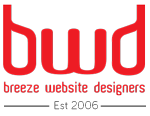22 Jun Feedback is Crucial For Design Agencies and Clients

Giving good feedback is integral to good design. While I’m sure all designers, myself included, would love to just come up with a gorgeous design without asking anyone else for their opinion, good design can be made better by working within limitations and incorporating the feedback of others. And of course, we generally want to make our clients happy and give them what they want. Accordingly, any designer worth his merit will make sure that the design process includes his client: we make mockups, ask for feedback, then refine, ask for more feedback, refine, until everyone’s satisfied
Sometimes everyone really is happy, and the end result is something that’s beautiful and usable. Other times, though, one of us is going to end up miserable. The design can end up so off the mark that your designer doesn’t even want to have his name connected to it. That’s a bad start.
I’ve been going through this process for a while now, with a whole range of different clients, both of the good and bad variety. Here are a few tips I’ve rounded up to make this feedback process as productive as possible.
1.Professionalism Matters
The first thing clients and designers need to realise, is that you need to be professional. This typically means you need to be restrained, calm and controlled. Sure, you hired the designer to design or overhaul. But that doesn’t mean they will get it right the first time. The truth is as with all things creative, you may need to try out different options to get the best results. So, shouting and screaming over the phone won’t do you both any good. After all you had your reasons for hiring the designer. Instead, if you’re not satisfied, tell them and let them know why.
2. Clear Guidelines
Completing a branding project only to miss the mark on the design is no fun. Unfortunately, it happens. To prevent this unnecessary mishap, make sure to communicate clear guidelines.
Clients should outline what they expect, and creative designers should communicate time and costs. This is where a contract becomes helpful. Make sure all necessary language is in the contract so there is no miscommunication.
3. Be Specific
For a web designer, there is nothing more frustrating than when the client says things like “I don’t like it”, “it’s all wrong”, “I can’t accept this”, “you need to do everything all over again” or “I’m not impressed”. Statements like that aren’t helpful at all. Here’s what you should do instead: tell them the things you liked about the design. Most clients often have no idea why they don’t like a design. So, pointing out what you liked automatically shows the designer the things you don’t because you’ll probably leave those out.
4. Impossible Requests
When a designer reads your brief, their only goal is to make your creative vision come to life. But that means you have to be sensible. Even though it’s art, design does have rules and not everything is possible.
Certain colors and shapes just won’t work together. Sometimes you can’t fit every single thing on one page.
And a lightning bolt logo can’t look realistic, minimalist and “hidden” all at the same time. It’s an impossible request.
There’s nothing wrong with asking your designers to do a lot. That’s their job. But sometimes even design can’t solve every problem.
5. Never Use the Phrase “you’re the designer.”
In theory, this would mean that you trust my decisions, value my input, and recognize that, since I’m a professional that you’re paying to do this work, I must know what I’m doing. In actuality, it means that you’re going to be the epitome of a Difficult Client: you’ll constantly say the designs I present to you are no good, but you won’t give any concrete explanations of why; you’ll insist that I make every single tiny, micro-managing alteration you request, then complain when the design starts to erode and the whole thing ends up a giant mess; and you’ll ignore all of my advice and opinions.
6. Never Copy Designs
Your competitor may have the most amazing looking logo or product design you’ve ever seen, but there are ways of achieving the same outcome without making a carbon copy of their design. One of the reasons you hired a designer is to reach such feats, or rather surpass them.
Designers are creative, so if you show them something or rather a desired outcome, we use it as reference. Usually when you give them guidelines, you’ll add a few logo’s that you would like your logo to resemble or are the benchmark for your desired look. Asking a designer to copy a logo can be viewed as undermining their capabilities. Most times a seasoned designer will even go to the extremes of refusing to work with you
7. Conclusion
Change is tough. After you’ve gone through a tough process of change, be sure to celebrate. You may find you’ve developed an awesome relationship through this experience.


